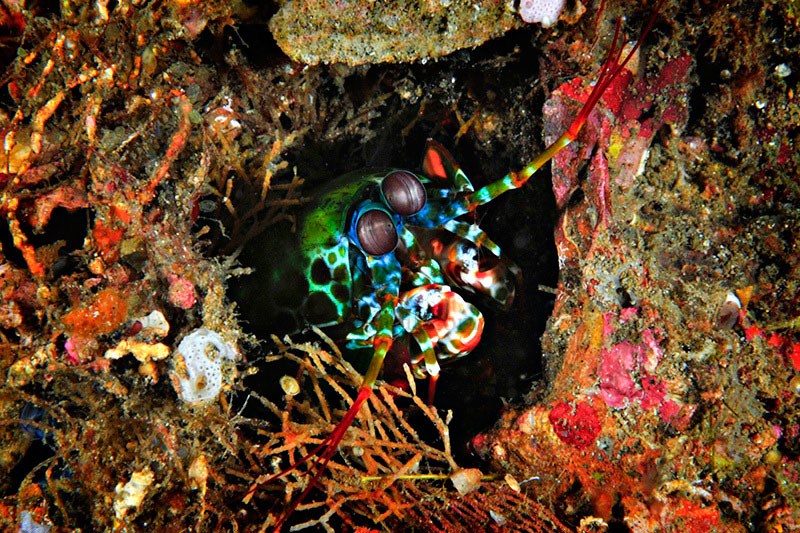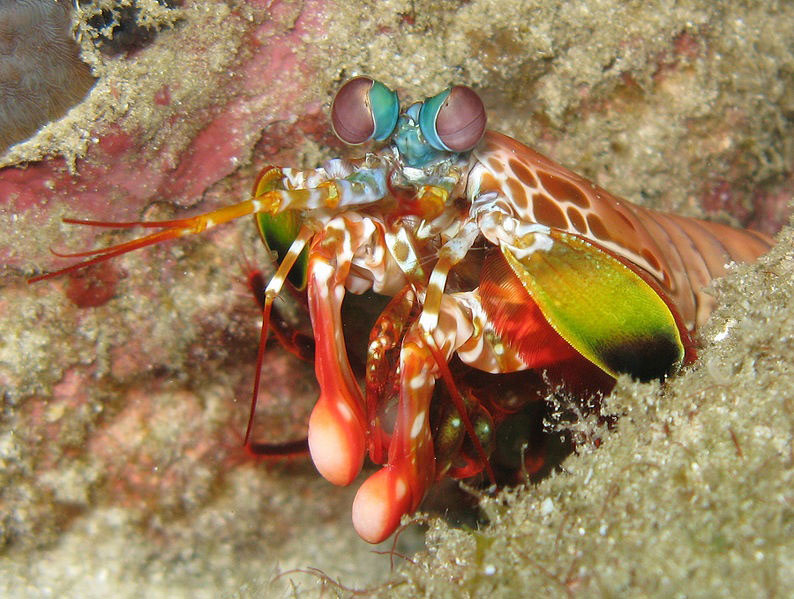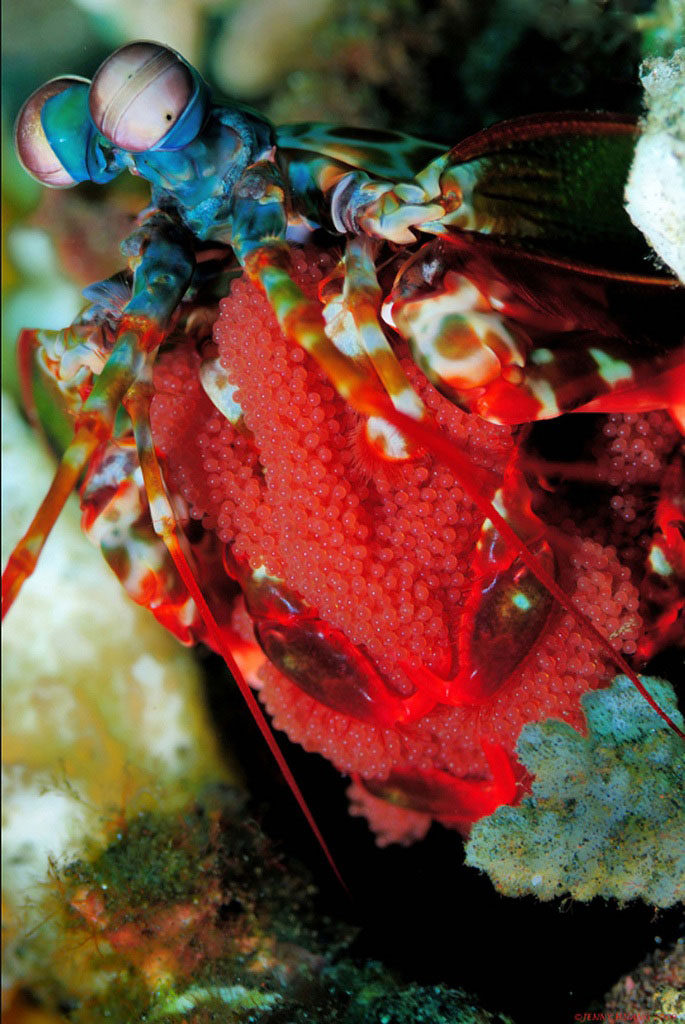Science Note: Mantis Shrimp
Air Date: Week of November 23, 2012

The peacock mantis shrimp hides away on the ocean floor. (Photo Aziz T. Saltik)
The peacock mantis shrimp throws a surprisingly strong punch for its small size. Researchers have discovered that the shrimp can crack shells with its lightning fast punch. The composition of the shrimp’s club is now being used to inspire stronger and more lightweight military protective gear. Annabelle Ford reports.
Transcript
FORD: The peacock mantis shrimp can grow up to 7 inches and is brightly polka-dotted. And while the shrimp doesn’t seem particularly intimidating, researchers have discovered that it packs a surprising punch.
Scientists at the University of California Riverside clocked the speed of the shrimp’s bright orange club-like arm at 50 mph underwater. That’s the fastest punch for any living animal on record. It can crush its prey with a force greater than 1,000 times its own weight and break through exoskeletons of crabs and other crustaceans known for their impact resistant shells.

The brightly colored peacock mantis shrimp and its bright orange arms, which throw the fastest recorded punch of any living animal. (Photo: Silke Baron,)
The super strong shrimp even needs to be housed in special quarters in the lab, since its fist could break through a standard aquarium tank!
The key to the peacock mantis shrimp’s power is three-fold. The arm’s top layer is composed of high mineral concentration, and is reinforced by a shock-absorbing web of fibers underneath. A third layer of fibers encapsulates the entire club, keeping it intact during hits. These layers create an incredibly strong, resilient and lightweight weapon.
Researchers plan on copying the shrimp’s design to improve military armor. Soldiers currently lug about 30 pounds of protective equipment with them. Scientists hope to reduce that weight by 2/3rds and increase the gear’s durability.

Peacock Mantis Shrimp (Photo: Jenny Huang)
It’s said that size doesn’t matter: well the peacock mantis shrimp is living proof that a small arm can bring big changes to a weighty problem.
That’s this week’s note on emerging science, I’m Annabelle Ford.
Links
University of California at Riverside article about the Mantis shrimp
Living on Earth wants to hear from you!
Living on Earth
62 Calef Highway, Suite 212
Lee, NH 03861
Telephone: 617-287-4121
E-mail: comments@loe.org
Newsletter [Click here]
Donate to Living on Earth!
Living on Earth is an independent media program and relies entirely on contributions from listeners and institutions supporting public service. Please donate now to preserve an independent environmental voice.
NewsletterLiving on Earth offers a weekly delivery of the show's rundown to your mailbox. Sign up for our newsletter today!
 Sailors For The Sea: Be the change you want to sea.
Sailors For The Sea: Be the change you want to sea.
 The Grantham Foundation for the Protection of the Environment: Committed to protecting and improving the health of the global environment.
The Grantham Foundation for the Protection of the Environment: Committed to protecting and improving the health of the global environment.
 Contribute to Living on Earth and receive, as our gift to you, an archival print of one of Mark Seth Lender's extraordinary wildlife photographs. Follow the link to see Mark's current collection of photographs.
Contribute to Living on Earth and receive, as our gift to you, an archival print of one of Mark Seth Lender's extraordinary wildlife photographs. Follow the link to see Mark's current collection of photographs.
 Buy a signed copy of Mark Seth Lender's book Smeagull the Seagull & support Living on Earth
Buy a signed copy of Mark Seth Lender's book Smeagull the Seagull & support Living on Earth

